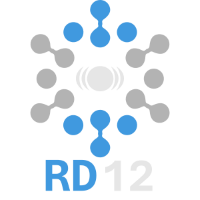Speaker
Description
The benefits of reducing the data collection temperature for electron cryomicroscopy (cryo-EM) from liquid-nitrogen temperatures to liquid-helium temperatures have been debated over many years. A physical theory of dose-dependent information loss in cryo-EM was presented for imaging vitrified aqueous biological specimens at liquid-nitrogen temperatures [1], but extending this to liquid-helium temperatures is needed. Previously, it was demonstrated that there is a 1.2–1.8x reduction in radiation damage for 2D protein crystals when imaging at temperatures near liquid helium [2]. Unfortunately, lowering specimen temperatures for cryo-EM of macromolecules embedded in vitreous ice has consistently proven to be no better than liquid-nitrogen temperatures and is often worse [3]. We aimed to determine whether the reduction in radiation damage measured in 2D crystals extends to single-particle cryo-EM and, if so, what else could be limiting data quality.
Consequently, we investigated several dose-dependent physical phenomena that could limit single-particle cryo-EM data quality: radiation damage, microscopic charge fluctuations, charge accumulation, pseudo-Brownian motion of water, mass loss, hydrogen bubbling, and beam-induced motion. We found that radiation damage is reduced by a similar amount for single-particle cryo-EM as was measured by 2D crystallography. We demonstrate that the reduction in data quality is likely caused by beam-induced motion, with all other physical phenomena that we measured being either unchanged or not sufficient to cause a reduction in image quality at lower specimen temperatures. Using novel specimen supports, we have been able to eliminate this beam-induced motion and determined cryo-EM structures at liquid-helium temperatures where every frame carries more information compared to the equivalent at liquid-nitrogen temperatures [4]. Alongside the development of new TEMs capable of operating at temperatures below liquid-nitrogen, this theory will enable cryo-EM to resolve smaller molecules than is currently possible.
References
[1] R. Henderson, C. J. Russo, Single Particle CryoEM: Potential for Further Improvement, Microscopy and Microanalysis 25 (S2) (2019) 4–5.
[2] K. Naydenova, A. Kamegawa, M. J. Peet, R. Henderson, Y. Fujiyoshi, C. J. Russo, On the reduction in the effects of radiation damage to two-dimensional crystals of organic and biological molecules at liquid-helium temperature, Ultramicroscopy 237 (2022) 113512.
[3] O. Pfeil-Gardiner, D. J. Mills, J. Vonck, W. Kuehlbrandt, A comparative study of single-particle cryo-EM with liquid-nitrogen and liquid-helium cooling, IUCrJ 6 (6) (2019) 1099–1105.
[4] J. L. Dickerson, K. Naydenova, M. J. Peet, H. Wilson, B. Nandy, G. McMullan, R. Morrison, C. J. Russo. Reducing the effects of radiation damage in cryo-EM using liquid helium temperatures. PNAS 2025

